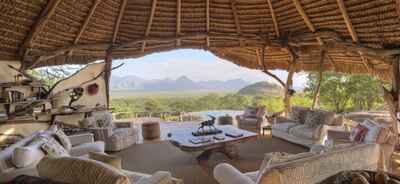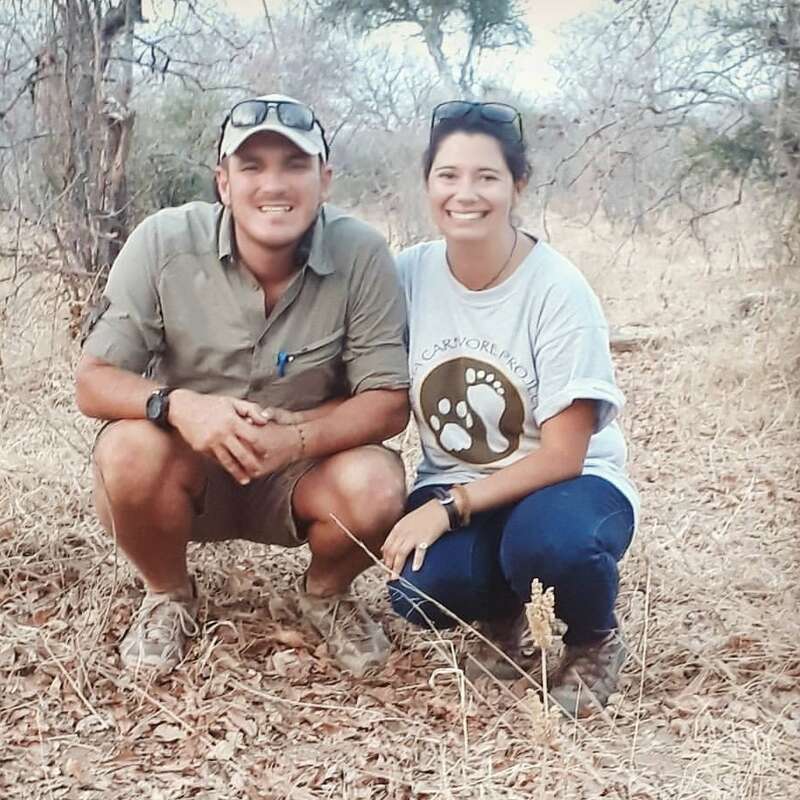About Sarara
First set up as a mobile camp in 1997, Sarara was rebuilt in 2008 as a permanent luxury tented camp.
It lies on the edge of the Mathews Range in the Namunyak Conservancy, which covers more than 340km² and has a variety of wildlife. The name Sarara means 'meeting place': the mountains meet here, so water is always available, and local people assemble to dig wells and collect water. With its combination of luxury and adventure, this is one of northern Kenya's finest and most memorable places to stay. The new Sarara Treehouses camp is nearby, nestled in the forest, with its own swimming pool and lounge with a magnificent view across the forest and mountains.
We loved Sarara. The owners clearly care a lot about conservation and the community and a stay here feels like a very worthwhile exposure to the traditional lifestyle of northern Kenya's semi-desert regions, while striking a perfect balance with guests' expectations. The camp is very comfortable but doesn't overwhelm its natural environment. Nature, luxury, wildlife and conservation are all incorporated in an uncontrived package. And the hosts are charming.
Our view
We loved Sarara. The owners clearly care a lot about conservation and the community and a stay here feels like a very worthwhile exposure to the traditional lifestyle of northern Kenya's semi-desert regions, while striking a perfect balance with guests' expectations. The camp is very comfortable but doesn't overwhelm its natural environment. Nature, luxury, wildlife and conservation are all incorporated in an uncontrived package. And the hosts are charming.
Accommodation
7 tented chalets
Children
Best for 8+
Open
2Jun to 14Oct & 16Dec-31Mar
Activities

4WD Safari

Birdwatching

Cultural excursion

Elephant encounter

Fly-camping

Guided walking safari

Horse-riding

Night drive

Private activities
Traveller reviews of Sarara
26 real, un-edited reviews from Expert Africa's travellers.
Arrived 29 Jan 2025, 2 nights
"Sarara review"
Overall rating: Excellent
Arrived 17 Sep 2024, 3 nights
"Sarara review"
Overall rating: Excellent
Arrived 19 Aug 2024, 3 nights
"Sarara review"
Overall rating: Excellent
Arrived 20 Jun 2024, 3 nights
"Sarara, a beautiful location"
Overall rating: Excellent
Arrived 20 Jun 2024, 3 nights
"A remarkable experience"
Overall rating: Excellent
Arrived 9 Feb 2024, 3 nights
"Sarara review"
Overall rating: Excellent
Arrived 28 Jan 2024, 3 nights
"Sarara review"
Overall rating: Excellent
Arrived 28 Jan 2024, 3 nights
"Sarara review"
Overall rating: Excellent
Arrived 28 Jan 2024, 3 nights
"Sarara review"
Overall rating: Excellent
Arrived 27 Jul 2023, 2 nights
"Sarara review"
Overall rating: Excellent
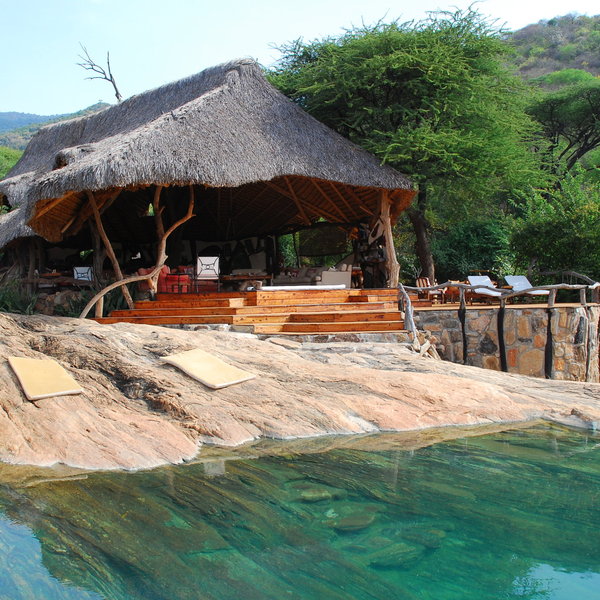
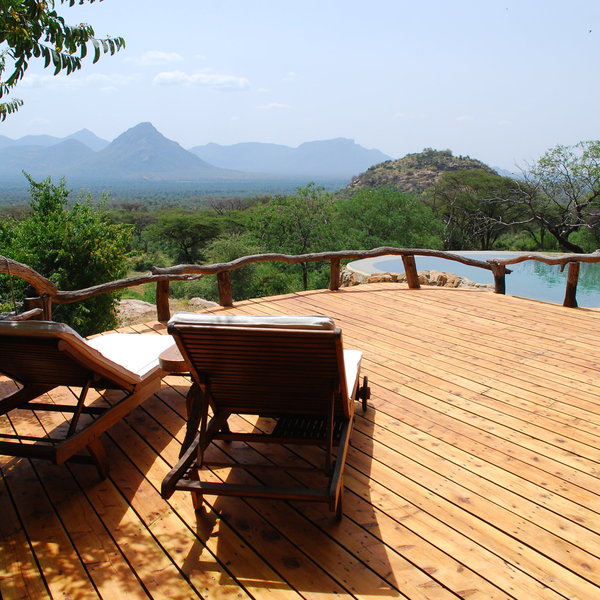
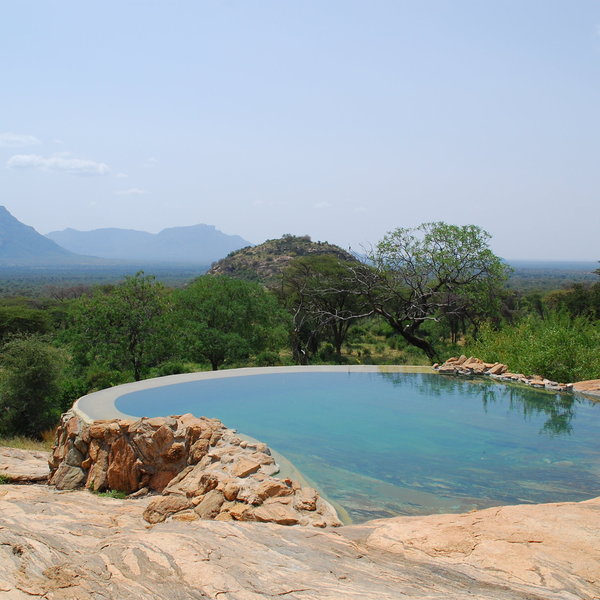
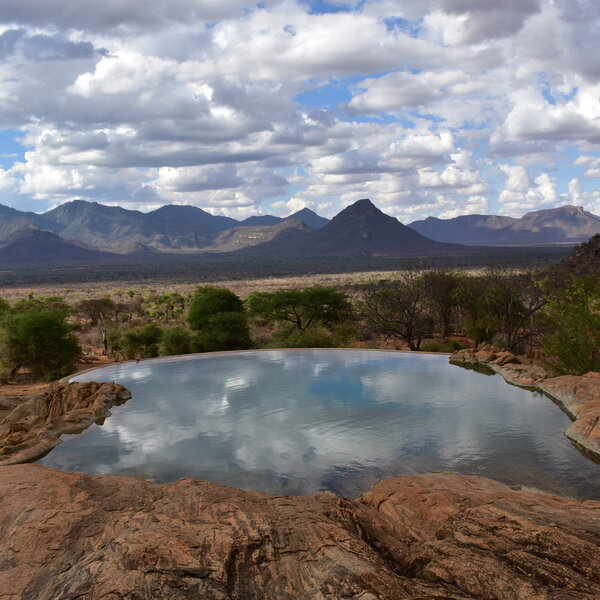

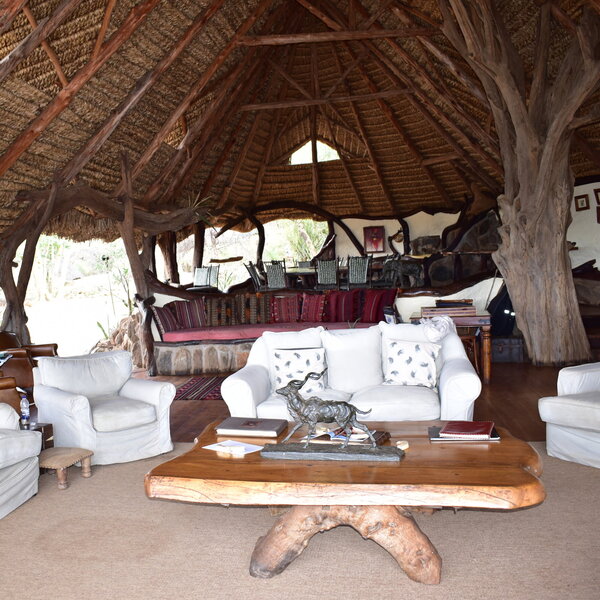
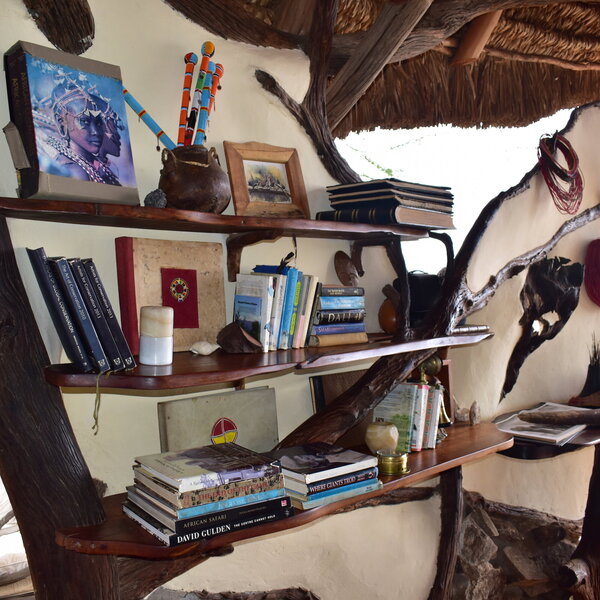
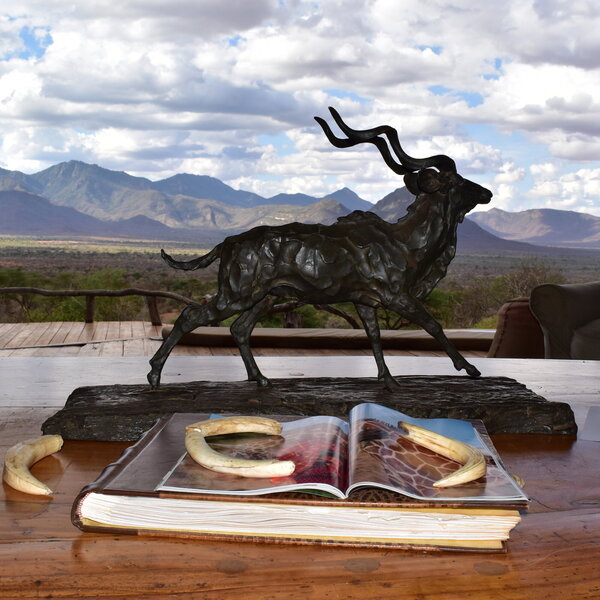
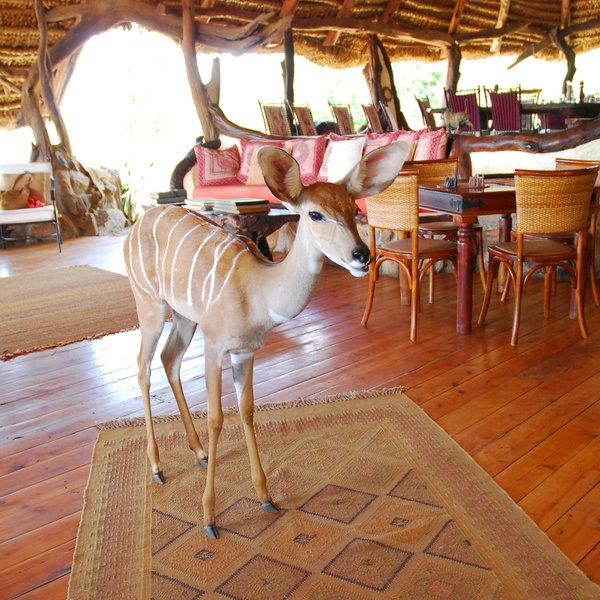
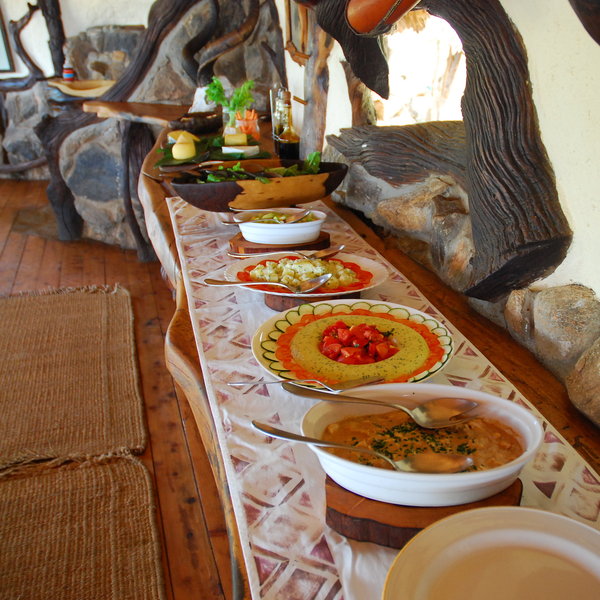
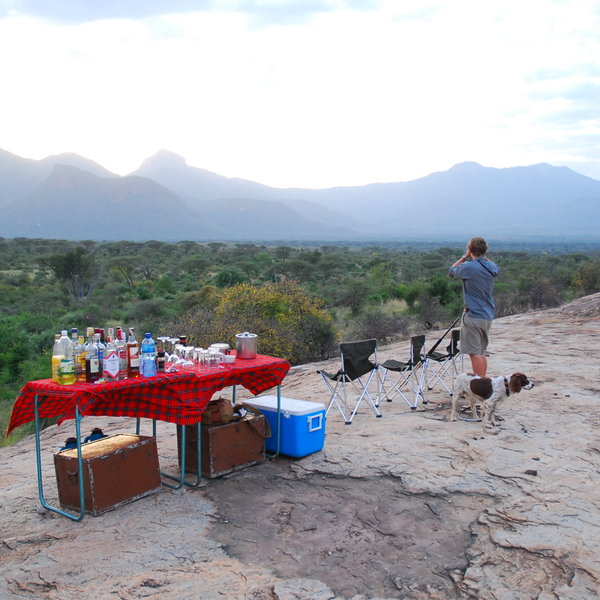
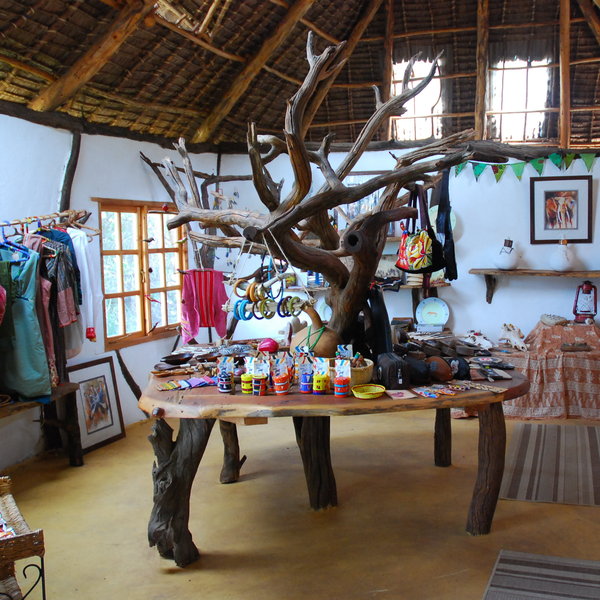
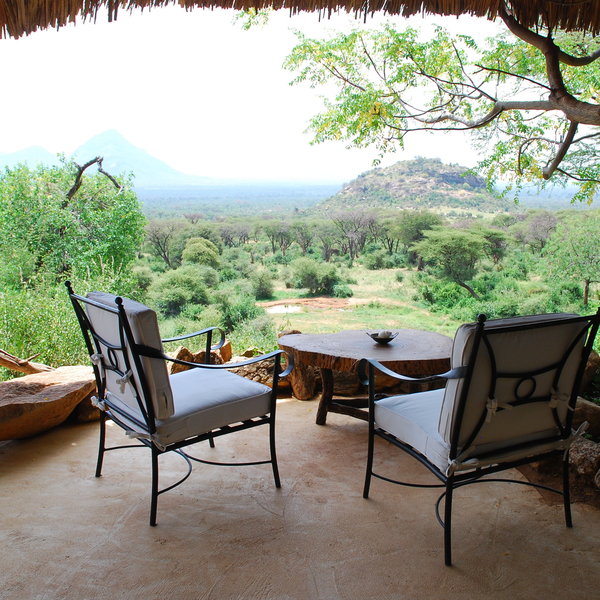
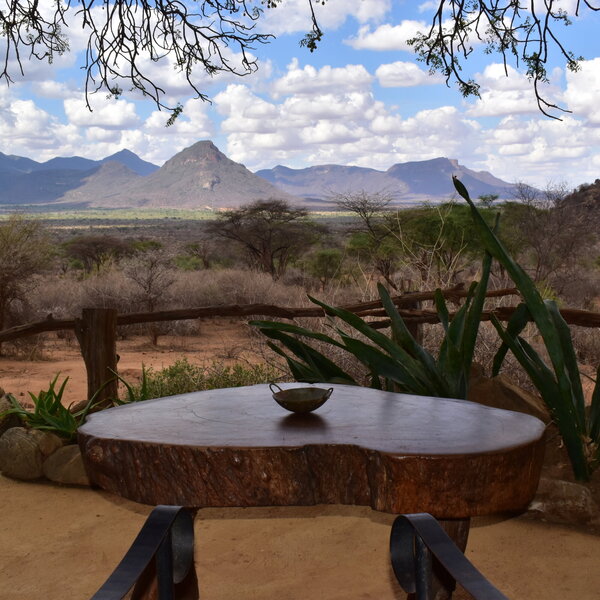
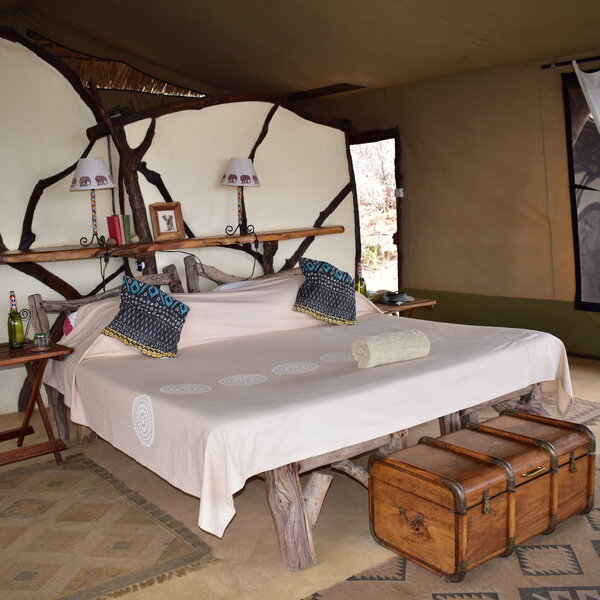
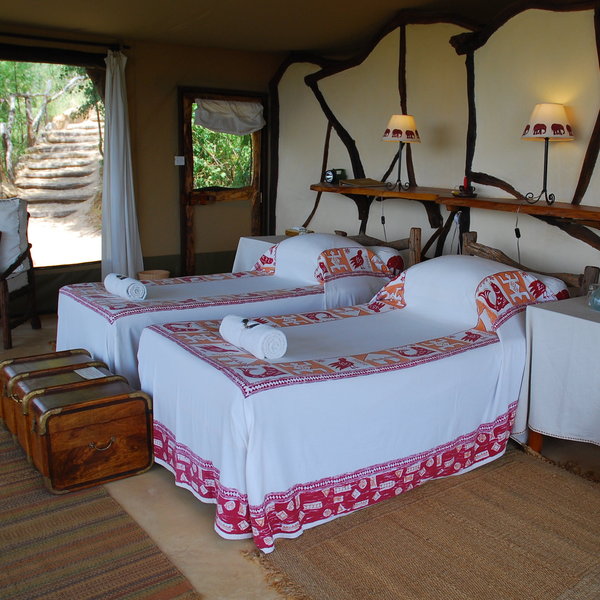
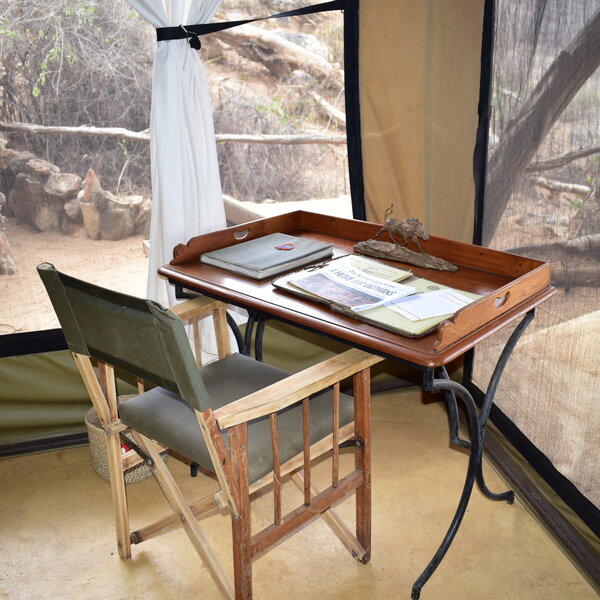
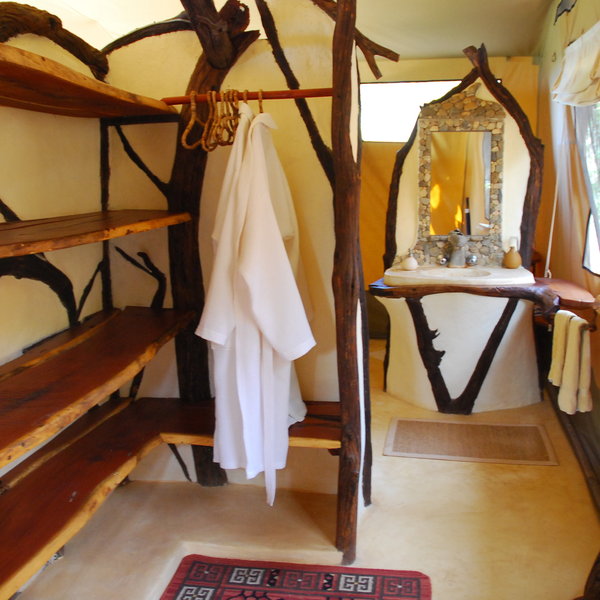
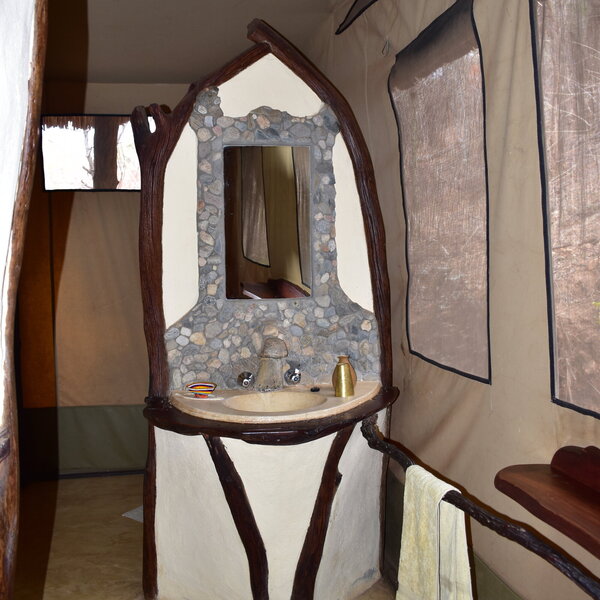
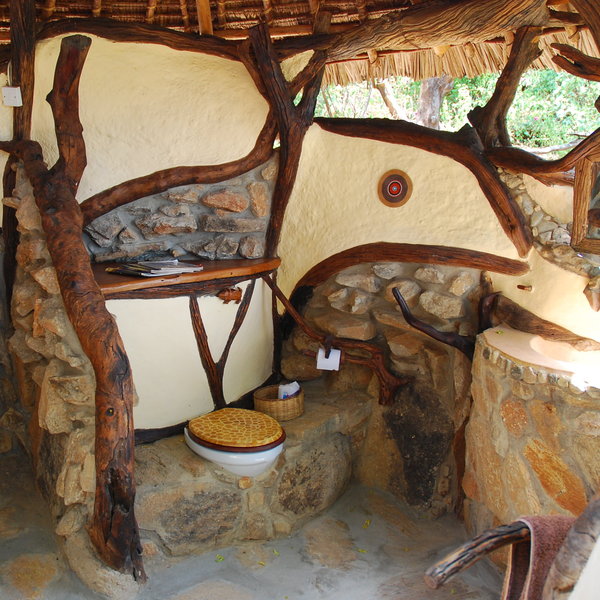
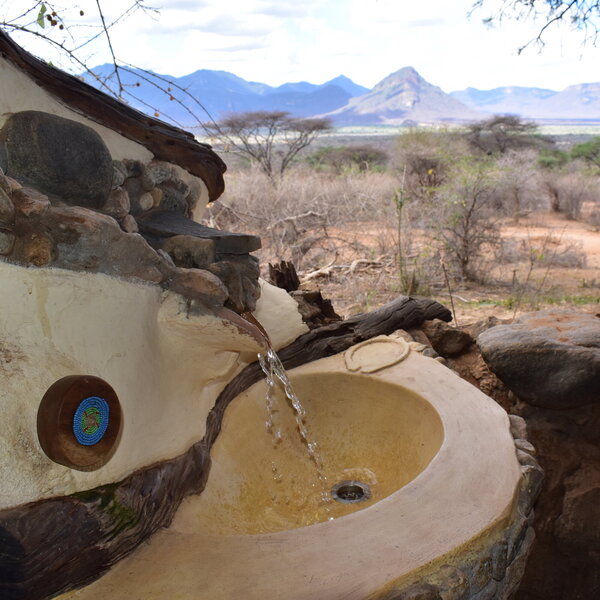
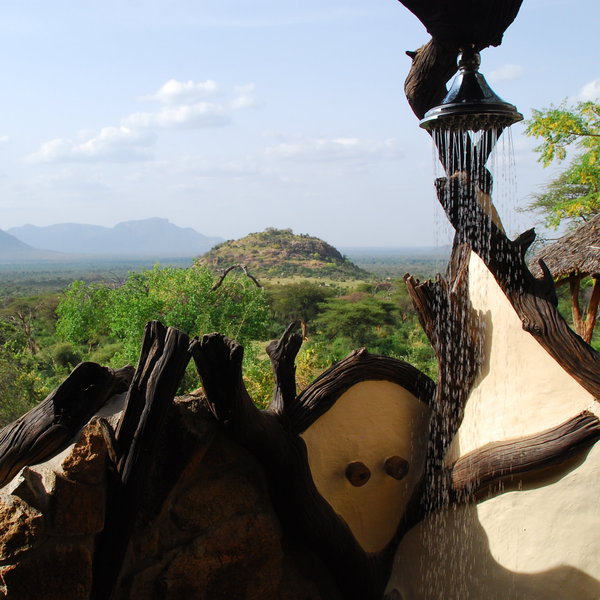
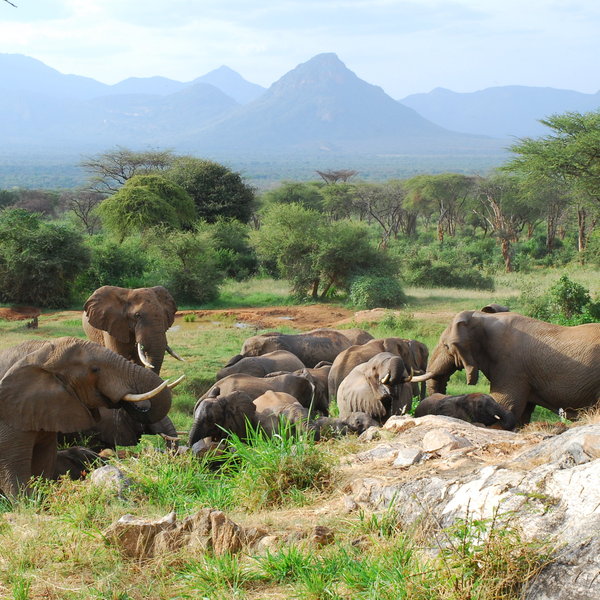
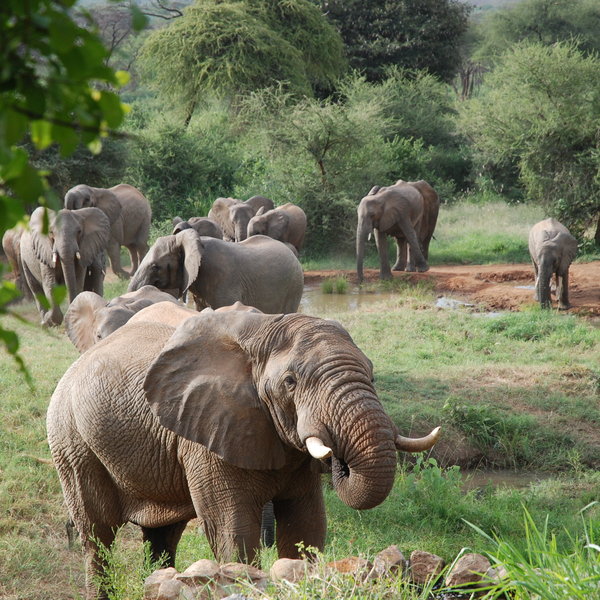
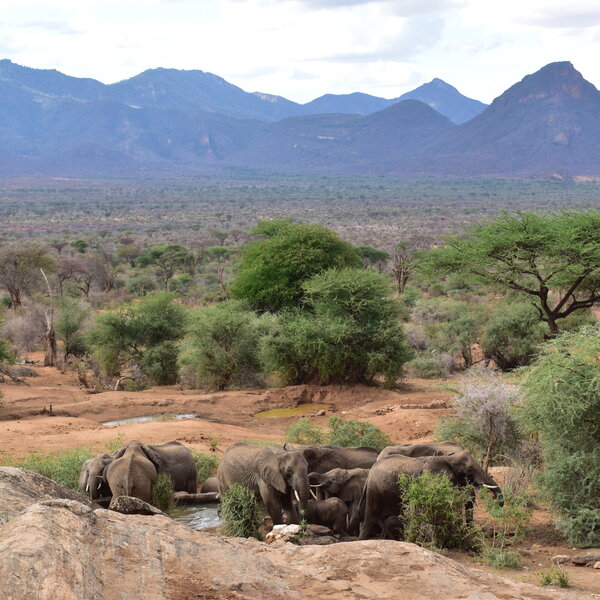
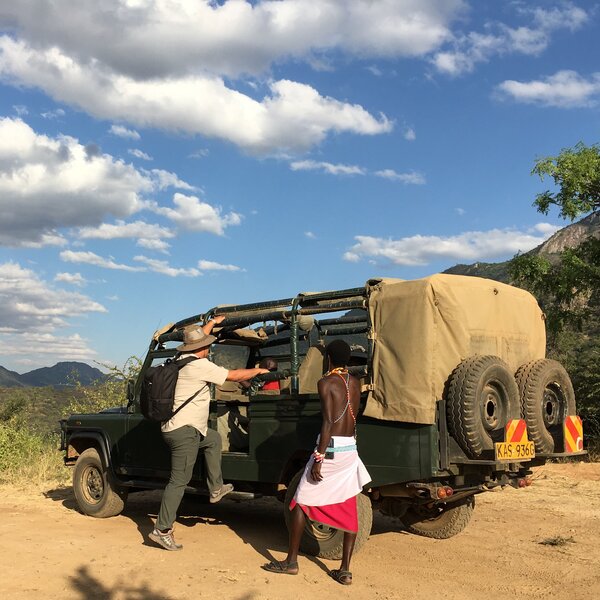
Expert Africa's gallery
When we travel we take lots of photos ourselves to give you a real and un-edited view of the safaris. See our 33 pictures of Sarara to get the candid view.
View gallerySafaris visiting Sarara
Just ideas, we'll always tailor-make a trip for you
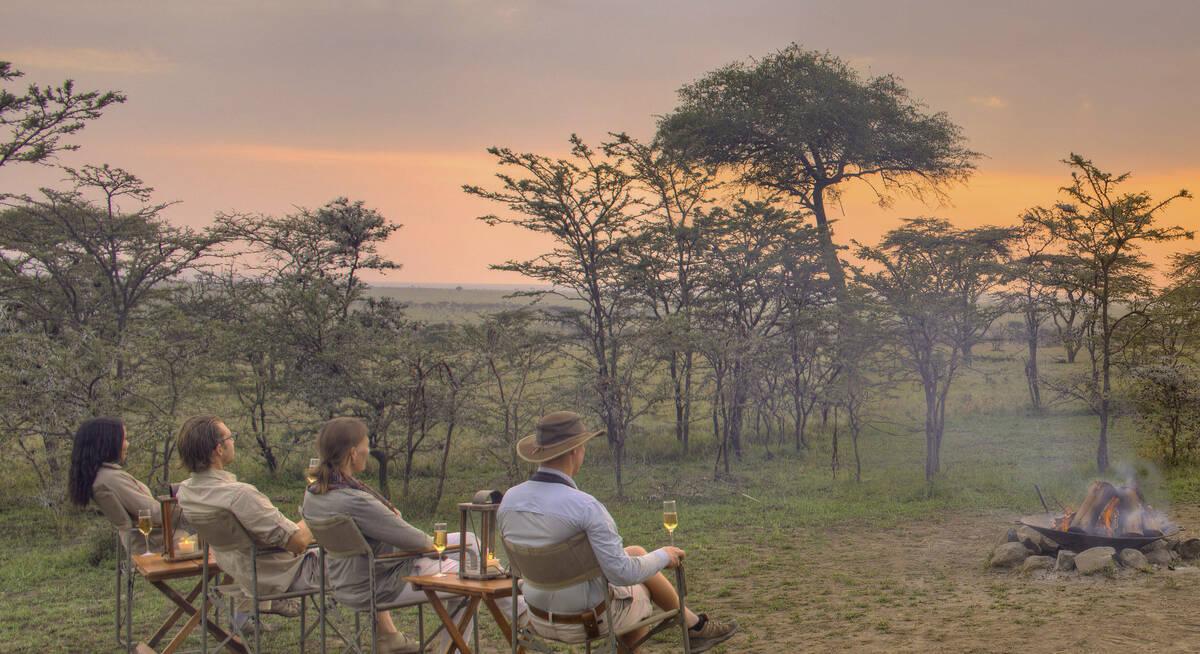
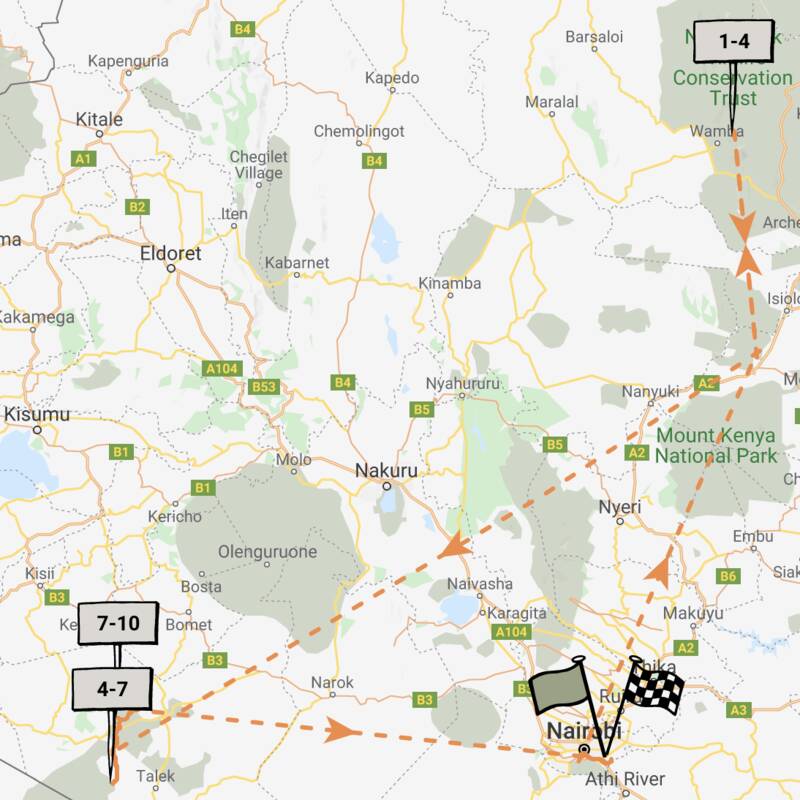
De Brazza Monkey Fly-in Safari
9 days • 3 locations • 1 country
NAIROBI AIRPORT TO NAIROBI AIRPORT
Enjoy a range of activities in the remote wilderness of northern Kenya before exploring the wildlife-rich plains of the Mara ecosystem. Private vehicles and guides heighten the personalisation of this highly immersive safari.
Visiting Northern Kenya, Mara Conservancies and 1 other area
US$13,540 - US$16,320 per person
Sarara: Our full report
First set up as a mobile camp in 1997, Sarara was rebuilt in 2008 as a permanent luxury tented camp.
It lies on the edge of the Mathews Range in the Namunyak Conservancy, which covers more than 340km² and has a variety of wildlife. The name Sarara means 'meeting place': the mountains meet here, so water is always available, and local people assemble to dig wells and collect water. With its combination of luxury and adventure, this is one of northern Kenya's finest and most memorable places to stay. The new Sarara Treehouses camp is nearby, nestled in the forest, with its own swimming pool and lounge with a magnificent view across the forest and mountains.
Around 60 per cent of Sarara's income goes straight back into the community: tourism has become essential to the survival of this wilderness area and the traditional communities living within its boundaries.
Sarara's central areas are structured around the irregular frames of wooden branches, reclaimed from the bush and infilled with cream-coloured cement in an organic and delightfully artistic building style that is common to many lodges in northern Kenya. Most of their furniture is built from the same wood, although a limited amount of wood brought in from outside the conservancy has been used for ceilings. It is tastefully designed with lots natural materials the open sides take advantage of the panoramic views.
There's a very nice infinity pool below the lounge deck, built into the natural rock. And in this hot climate you'll be glad of it – and of the comfortable loungers in the shade. In front of this pool is a waterhole that draws in elephants, usually as daily visitors. You can watch them from the pool and lounge-deck, or sneak down to the hide to watch from very close quarters.
The six very large tented chalets at Sarara are canvas structures but with walls largely consisting of mosquito screen. Rugs on the floor and armchairs complete the furnishings. There's a wall behind the beds and an indoor bathroom, with bathrobes, a funky washbasin and mirror, and a flush loo. There's also an outdoor, open-sided shower and toilet, accessed by a short walkway, with views of the waterhole in some cases. You get hot water 24 hours a day, from solar panels.
There is one two-bedroom family house, Loimugi House, which is located to the right-hand side of the communal area. This has been built in the same style as the main lodge, constructed from gnarled tree branches and completely open to the front. There is a tented bedroom to either side which are connected by a spacious lounge in the middle. A flight of wooden steps leads up to a private dining area and Loimugi House also has its own private swimming pool, which we were told was regularly frequented by elephants.
For anyone with mobility issues contemplating a stay at Sarara, it's important to note that walking to the guest rooms involves a number of steps and uneven terrain along the paths. If you're comfortable climbing two flights of stairs, this shouldn't be a problem.
For people staying more than three nights, Sarara often organises fly-camping in a dry riverbed (when rain isn't forecast). This needs to be booked in advance. There are six tents for this purpose (so a maximum group size of 12) but four tents is ideal, and they will even do it for one.
Sarara is perfect for people who enjoy walking and the most popular activities here take place on foot, or with the assistance of camels. That said, day and night drives are on offer as well, and the game viewing here can be good, although wildlife is not as prolific as in other parts of Kenya. One benefit of Sarara is that each party is guaranteed their own private vehicle and guide for the duration of their stay, giving plenty of flexibility as to how you plan your day. Bush dinners in the riverbed, village visits (US$10 donation per person paid to the camp) and visits to the singing wells (no photos, unfortunately) are also organised. At the singing wells, it's not the wells that do the singing, but local people, who assemble to form a human chain to collect water from the deep wells and sing to keep their spirits up and their rhythm constant under the hot sun.
Horse riding is a popular option here and when we were here in 2019 there were around 15 horses suitable for guests. Join an experienced riding guide to explore the Namunyak Conservancy from horseback. The wildlife is generally fairly relaxed around horses, allowing you to get close to species such as giraffe and zebra. The rides can be tailored to suit you, with gentle hacks for novice riders and longer, faster paced rides for those with more experience.
Sarara is around a 30-minute drive from Reteti Elephant Sanctuary, which was set up in 2016 to rescue northern Kenya’s elephant orphans. Young elephants become orphaned for a number of reasons, some fall into wells while others are the victims of human wildlife conflict. At Reteti dedicated keepers look after the orphans, raising them by hand until they are ready to be returned to the wild. Reteti welcomes visitors during designated feeding times, either between 08:30 and 10:00 or between 11:30 and 13:00. Chat to the keepers and learn about the elephants and how they are preparing them to return to the wild. Visits to Reteti are at an additional cost of $25 per person, which helps to support the sanctuary. You can read about the excursion on our Reteti Elephant Orphanage visit page.
Activities
4WD Safari
Birdwatching
Cultural excursion
Elephant encounter
Fly-camping
Guided walking safari
Horse-riding
Night drive
Private activities
Families & children
- Attitude towards children
- Sarara is happy to accept children of all ages.
- Property’s age restrictions
- None.
- Special activities & services
- Women working in the housekeeping team can help with children – although they don't have any child-minding qualifications. Parents can even leave them behind while they go out on game drives. The Samburu staff love taking kids out to make fire and bows and arrows etc. Football on the airstrip is popular when they have enough players – and when there’s no plane due to arrive! Sarara will also do children’s meals.
- Equipment
- Sarara has highchairs and mosquito-net dome tents that can be used by children, and camp beds that can be added into a parents’ room. Loimugi House has been built with families in mind and works well for older children.
- Generally recommended for children
- Generally recommended for active older children who can make the most of the activities on offer.
Food & drink
- Usual board basis
- Full Board & Activities
- Food quality
- The food at Sarara was excellent, made with fresh ingredients and with lots of flavour.
Breakfast is a hearty and varied spread of cereals, fruits, fresh bread and yoghurt. Then your order is taken for a cooked items, with eggs of your choosing, bacon, sausage, mushrooms and beans.
Lunch was a buffet with a range of fresh and tasty dishes including lasagna, salads, chutneys and focaccia. Desert was a passionfruit sorbet.
When we stayed at Sarara in 2019 we had a bush dinner in the dry riverbed, with a warming fire and dances by local Samburu warriors. We started with sweetcorn fritters and a sweet dipping sauce, this was followed by a selection of barbequed chicken, vegetable and beef kebabs, rice, chapattis and salads. Dessert was a chocolate brownie and cream. - Dining style
- Group Meals
- Dining locations
- Indoor and Outdoor Dining
- Further dining info, including room service
- Room service can be organised, but must be arranged in advance.
- Drinks included
- Almost all drinks are included but there are a few special whiskies and ports that are at additional cost.
Our travellers’ wildlife sightings from Sarara
Since mid-2018, many of our travellers who stayed at Sarara have kindly recorded their wildlife sightings and shared them with us. The results are below. Click an animal to see more, and here to see more on our methodology.

100% success

100% success

84% success

78% success

76% success

50% success

29% success

14% success

13% success

6% success

6% success

0% success

0% success

0% success

0% success
Getting there
- Location
- Northern Kenya, Kenya
- Ideal length of stay
- Four nights – or longer if you want to fly-camp.
- Directions
- The camp is 200m from Sarara’s own airstrip, which can be accessed by a charter flight (small planes only) from Nanyuki or Wilson Airport, Nairobi. The larger Kalama airstrip near the tarmac Isiolo–Marsabit road can be used for larger charter planes.
- Accessible by
- Fly-and-Transfer
Special interests
- Honeymoons
- A luxurious lodge with a natural aesthetic, totally in keeping with its surroundings, Sarara is a very special place for a honeymoon. The combination of unique activities, delicious meals and breathtaking views mean you are in for a memorable stay.
- See ideas for Honeymoons in Kenya
- Riding safaris
- While northern Kenya is generally arid, the bushy landscapes around Sarara attract good wildlife and riding excursions offer a new perspective. Most of the plains grazers are relaxed around the horses. Gentle hacks or faster rides can be arranged.
- See ideas for Riding safaris in Kenya
- Cultural Experiences
- In a nearby seasonal river, Samburu people assemble in the dry season to form human chains, collecting water from deep wells for their livestock. Singing as they work, their tunes create a hypnotic experience known as the ‘singing wells’.
- See ideas for Cultural Experiences in Kenya
- Wellbeing retreats
- With its famous infinity pool overlooking the sweeping plains below and a dramatic mountainous backdrop on the horizon, Sarara is a memorably located and luxurious base from which to enjoy your safari in great comfort.
- See ideas for Wellbeing retreats in Kenya
- Scenic walking & hiking
- Sarara offers some more leisurely walking in Kenya, with a well-armed guide through the rocky and forested areas of the Namunyak Conservancy. You can swim in the streams and rock pools, as well as look out for big game and birds.
- See ideas for Scenic walking & hiking in Kenya
- Private safari camps & lodges
- Sarara’s Loimugi House has two bedrooms, a private dining area, a lounge and a pool. Set near Sarara’s main communal area, you can enjoy the camp’s wonderful atmosphere and location while being able to retire to your private house whenever you like.
- See ideas for Private safari camps & lodges in Kenya
Communications
- Communications
- Sarara has no cellphone network, but there is a satellite phone and a wireless phone for emergencies. There is WiFi in the communal area, however this is quite slow.
- TV & radio
- No TV available.
- Water supply
- Borehole
Health & safety
- Malarial protection recommended
- Yes
- Medical care
- There is a first-aid kit at Sarara, and one manager and a member of staff are first-aid trained and have done trauma courses. There is a very good missionary hospital at Wamba, about three hours by road over the mountains. Alternatively Isiolo is about a two-hour drive south, and Nanyuki an hour further on. The lodge has links to the flying doctor service for emergencies.
- Dangerous animals
- High Risk
- Security measures
- Sarara normally has several scouts on site to look after the property and conduct walks – when they carry heavy-calibre rifles.
- Fire safety
- There are fire extinguishers dotted around the camp and one in every room, together with sand buckets. Staff are trained in fire drill.
Useful info
- Disabled access
- On Request
- Laundry facilities
- A full laundry service is included, except for ladies’ underwear. Items are hand washed and line dried, and soap and laundry lines are provided in the chalets.
- Money
- Sarara can occasionally exchange dollars and Kenyan shillings but the amount depends on what they have in camp.
- Accepted payment on location
- At present, any payments must be made in cash only, using US dollars, Kenyan shillings, British pounds, euros, and some other currencies.
Plan and book your trip with Expert Africa
All of our trips are tailor-made, so we'll always adapt them to suit you. Talk to an Expert and let us plan and arrange your perfect trip.

Talk to an Expert
Call or email us now! We’ll match you with the Specialist in our team who is best suited to help you. Then together we can start planning your trip.

Set up your itinerary
Based on our experience and your ideas, your specialist will create a detailed, costed itinerary. We’ll refine it together, until we have a trip that you’re perfectly happy with.

Prepare for your trip
The same Specialist will make the seamless arrangements for your trip, send you detailed travel documents, and be available to answer any questions before you depart.

Travel with peace of mind
After you set off, you’ll be cared for by our partners in Africa, most of whom have worked with Expert Africa for decades. And if you ever need us urgently, we’re available 24/7.

When you return
We love to learn about your trip, and so will always be grateful if you’ve the time to give feedback to your Specialist when you return.
Sarara's location
Look closer at the environment and surroundings of Sarara.
Excursions from Sarara
Optional extra day-trips and excursions possible whilst you're staying at Sarara. Talk to us: these are usually best arranged before you go.
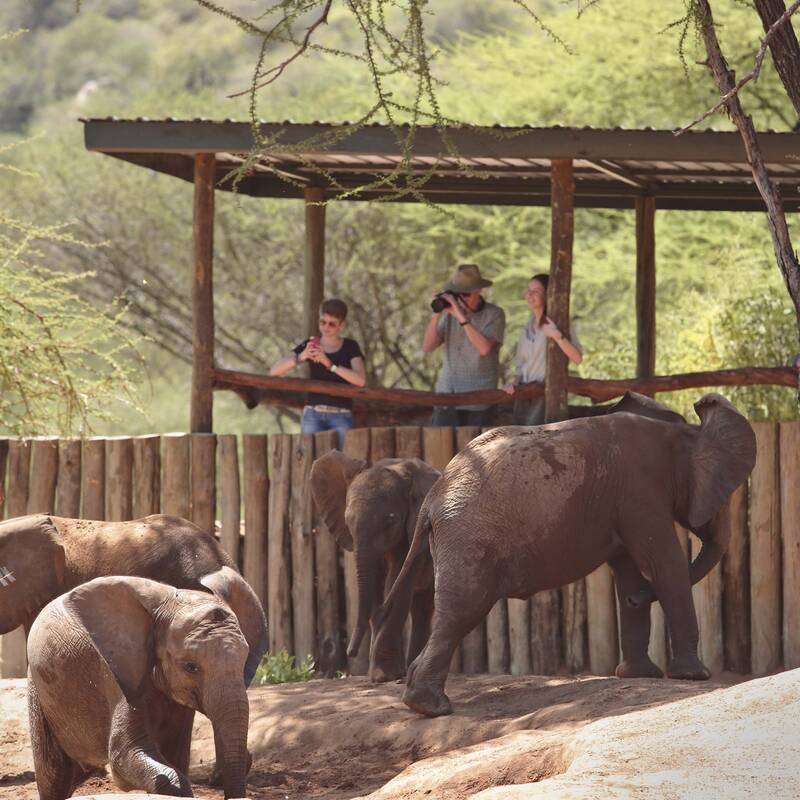
Reteti Elephant Orphanage visit
One-and-a-half hours, plus transfers
Visit the community-run Reteti Elephant Sanctuary in Samburu, for an intimate experience meeting the orphaned baby elephants who have been rescued from the surrounding regions. They are hand-reared by Samburu keepers, until they are ready to be released back into the wild.
More about Reteti Elephant OrphansOther lodges in Northern Kenya
Alternative places to stay in this same area.
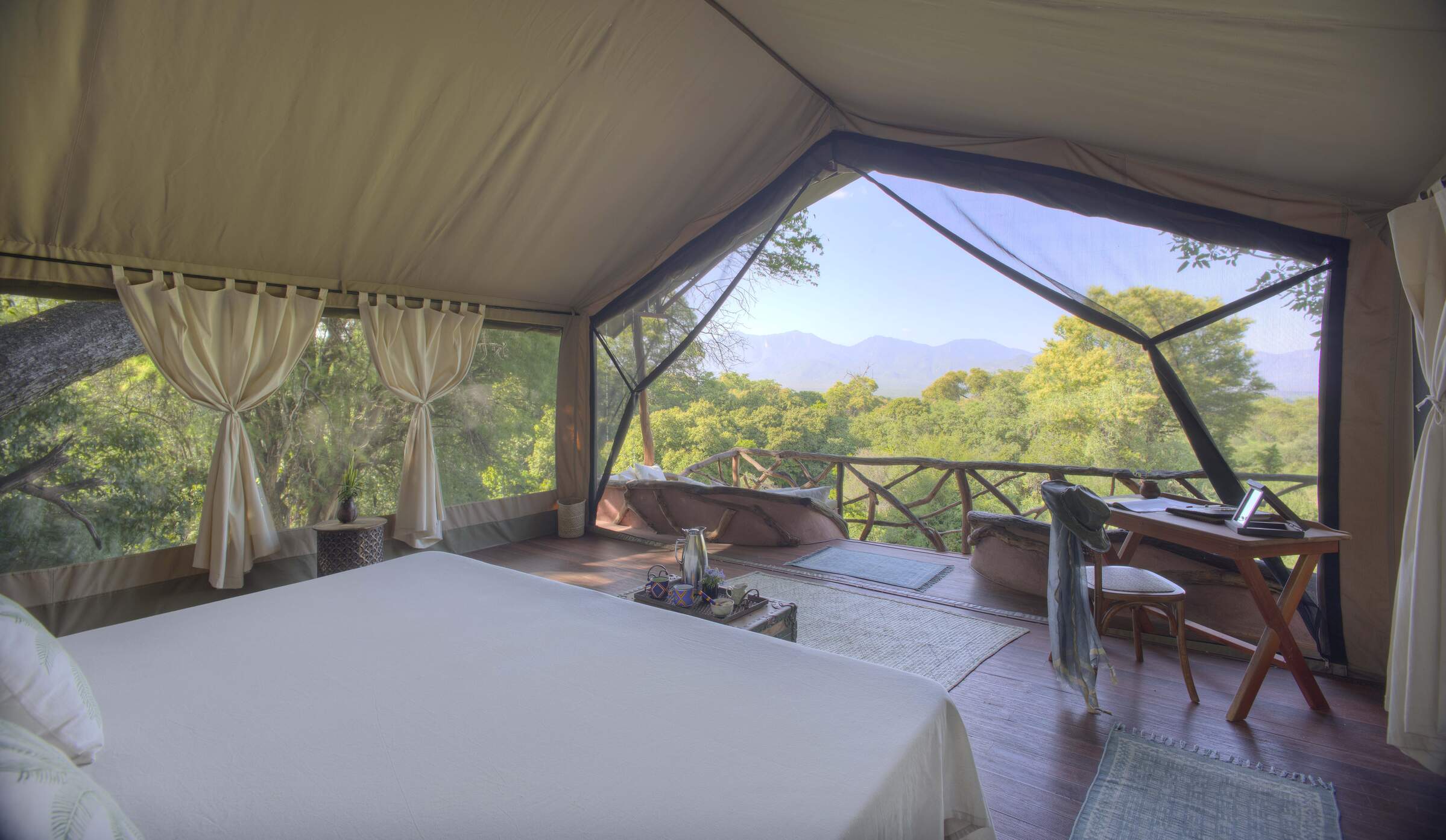
Sarara Treehouses
Sarara Treehouses is a luxurious camp with tents raised up in the forest canopy. Come here for the wildlife, walking and cultural activities, accompanied by excellent local guides.
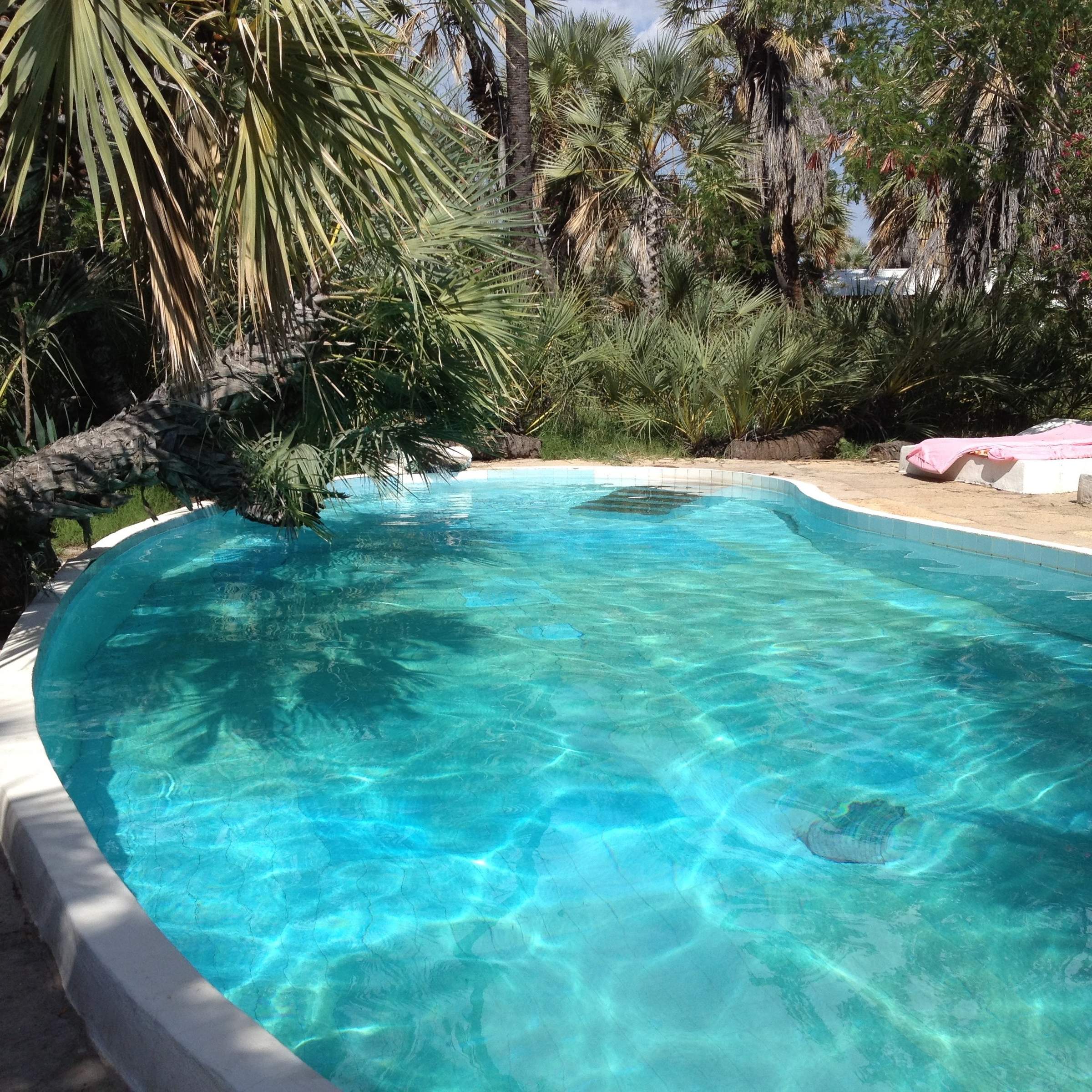
Oasis Lodge
Oasis Lodge is a basic hotel for adventurous travellers near the east shore of Lake Turkana.
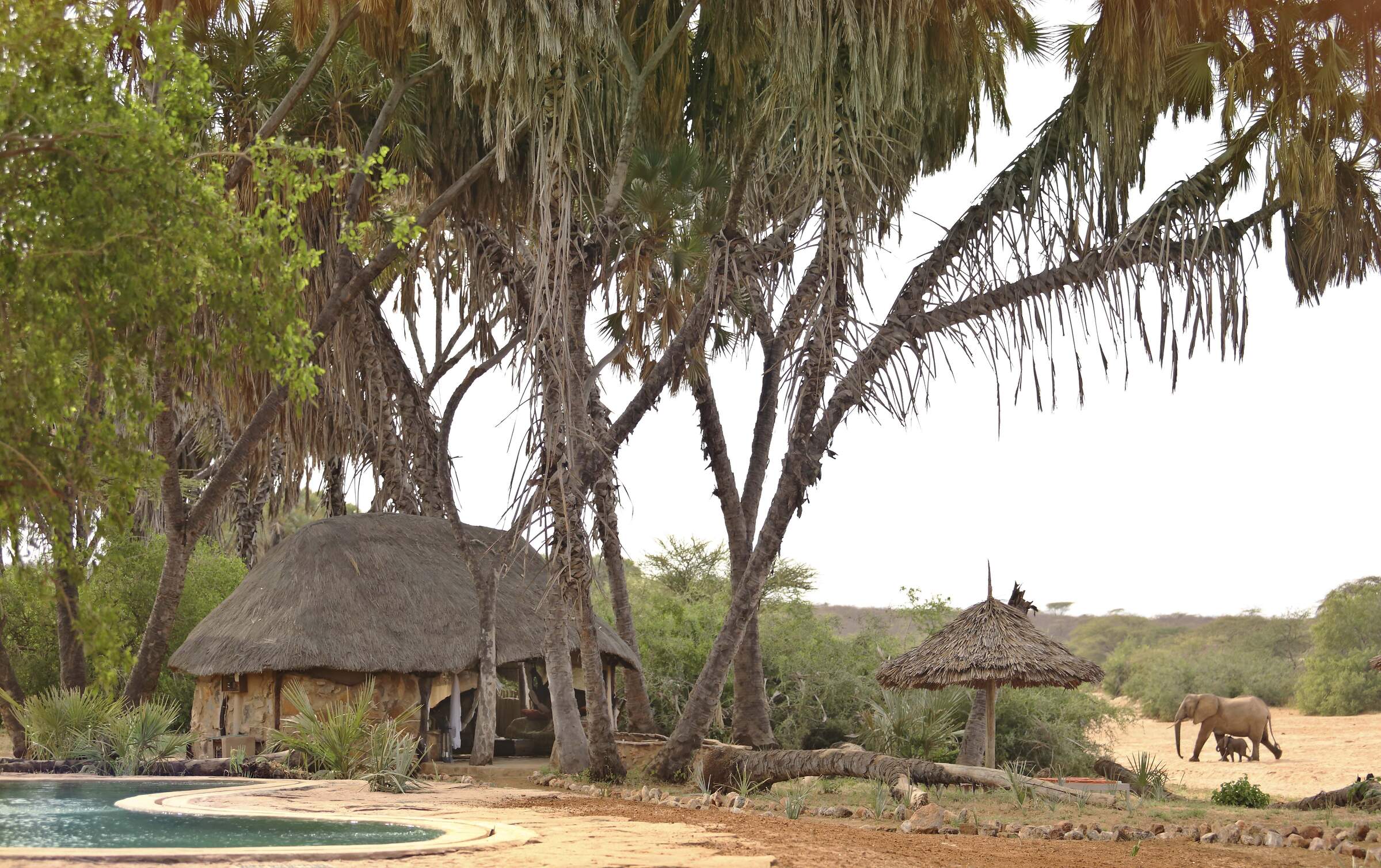
Saruni Rhino
Saruni Rhino is the only camp in the Sera Conservancy in northern Kenya, where guests are based when tracking black rhino on foot.
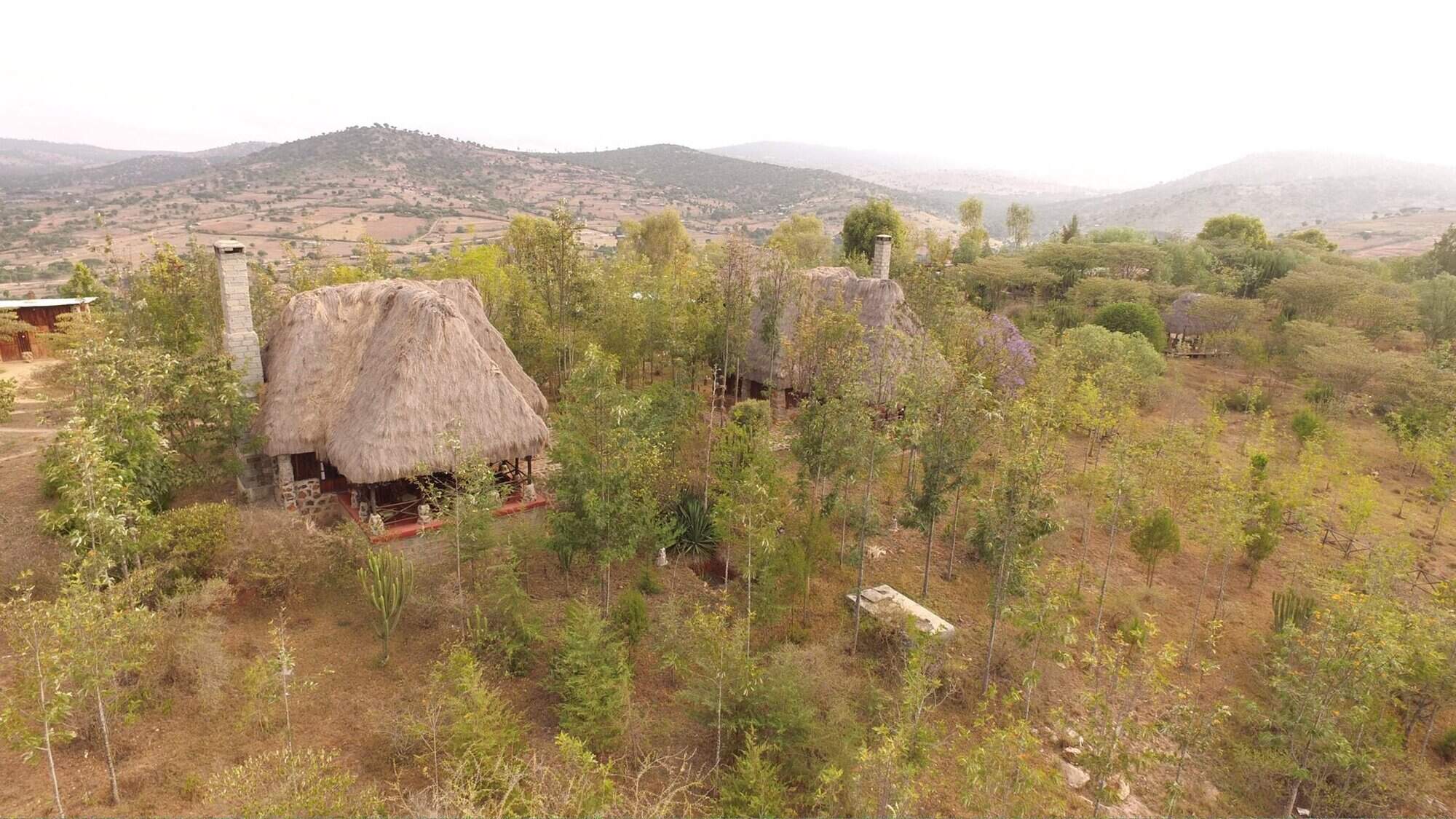
Ngari Hill Ecolodge
The 6-room Ngari Hill Ecolodge is the only full-service lodge in Maralal and makes a convenient overnight stay en route from Nairobi to Lake Turkana.
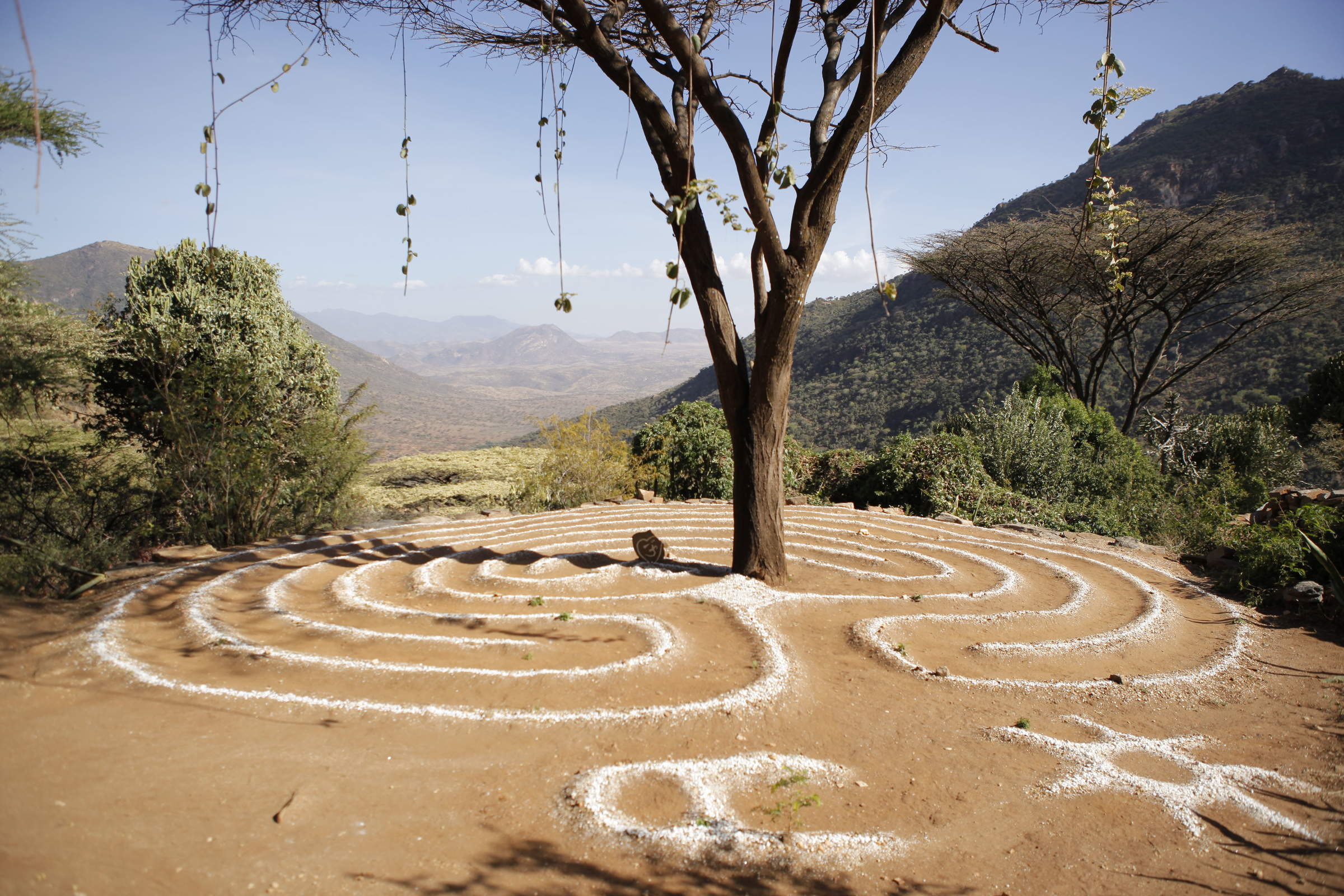
Desert Rose
This small, unique mountain lodge – Kenya’s northernmost luxury accommodation – is set amid the towering landscapes of Mount Nyiru, and is a superb place for rest and relaxation.
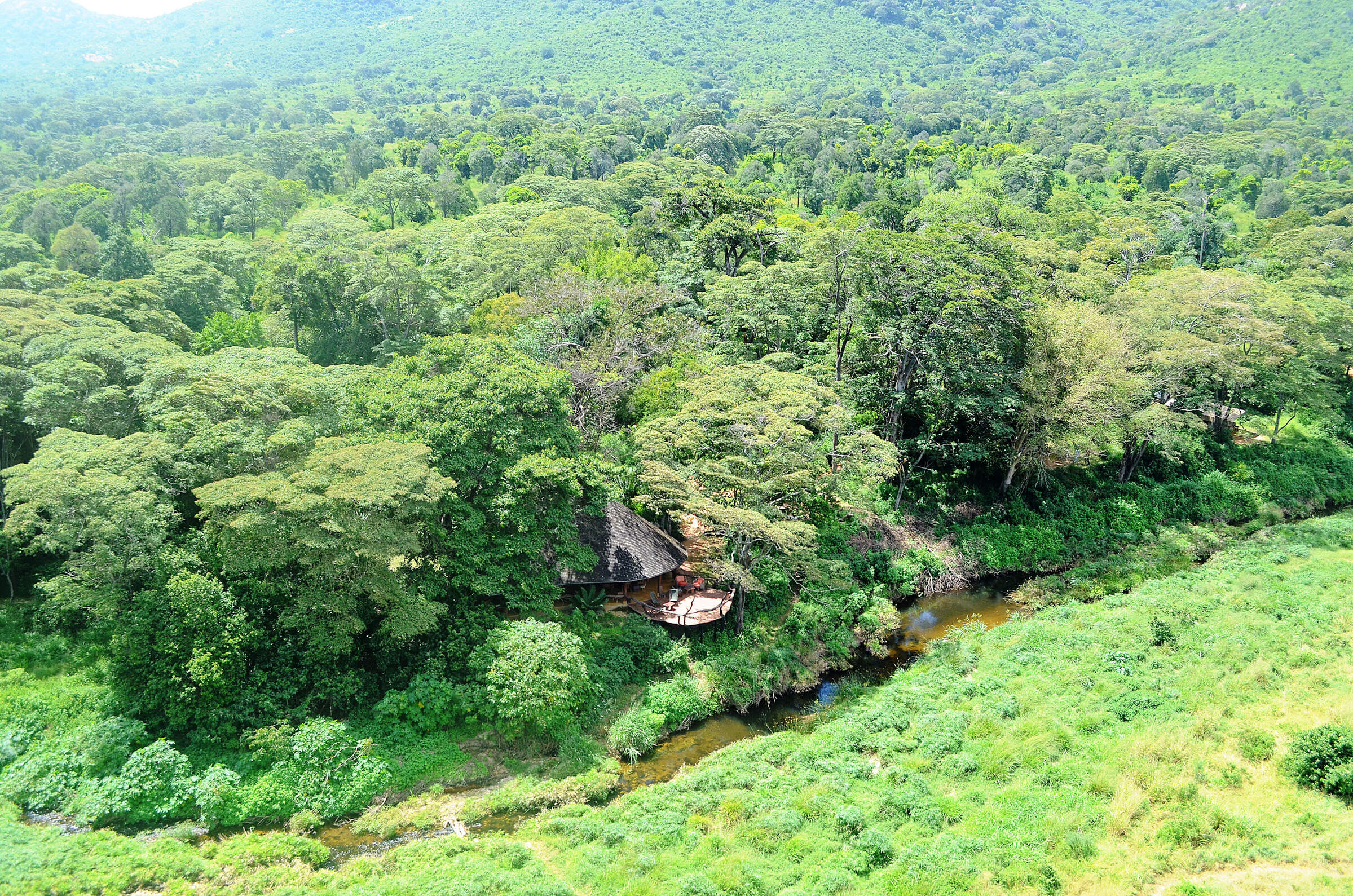
Kitich Forest Camp
Kitich Forest Camp is one of Kenya's most established, remote highland forest camps, offering exciting bush walks and close encounters with big game as well as insects and birdlife.
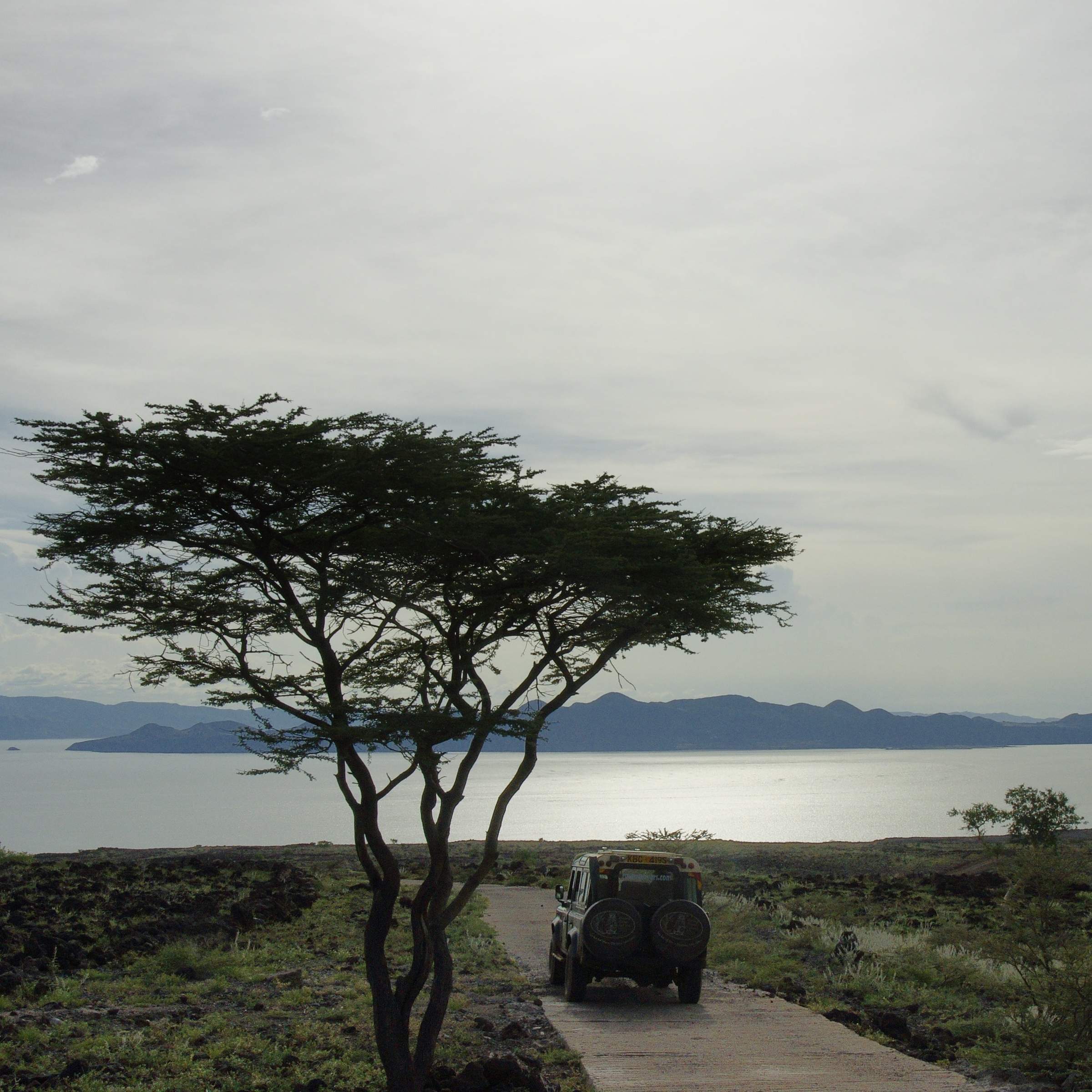
Palm Shade Camp
Palm Shade Camp is a simple camp for adventurous travellers near the east shore of Lake Turkana.
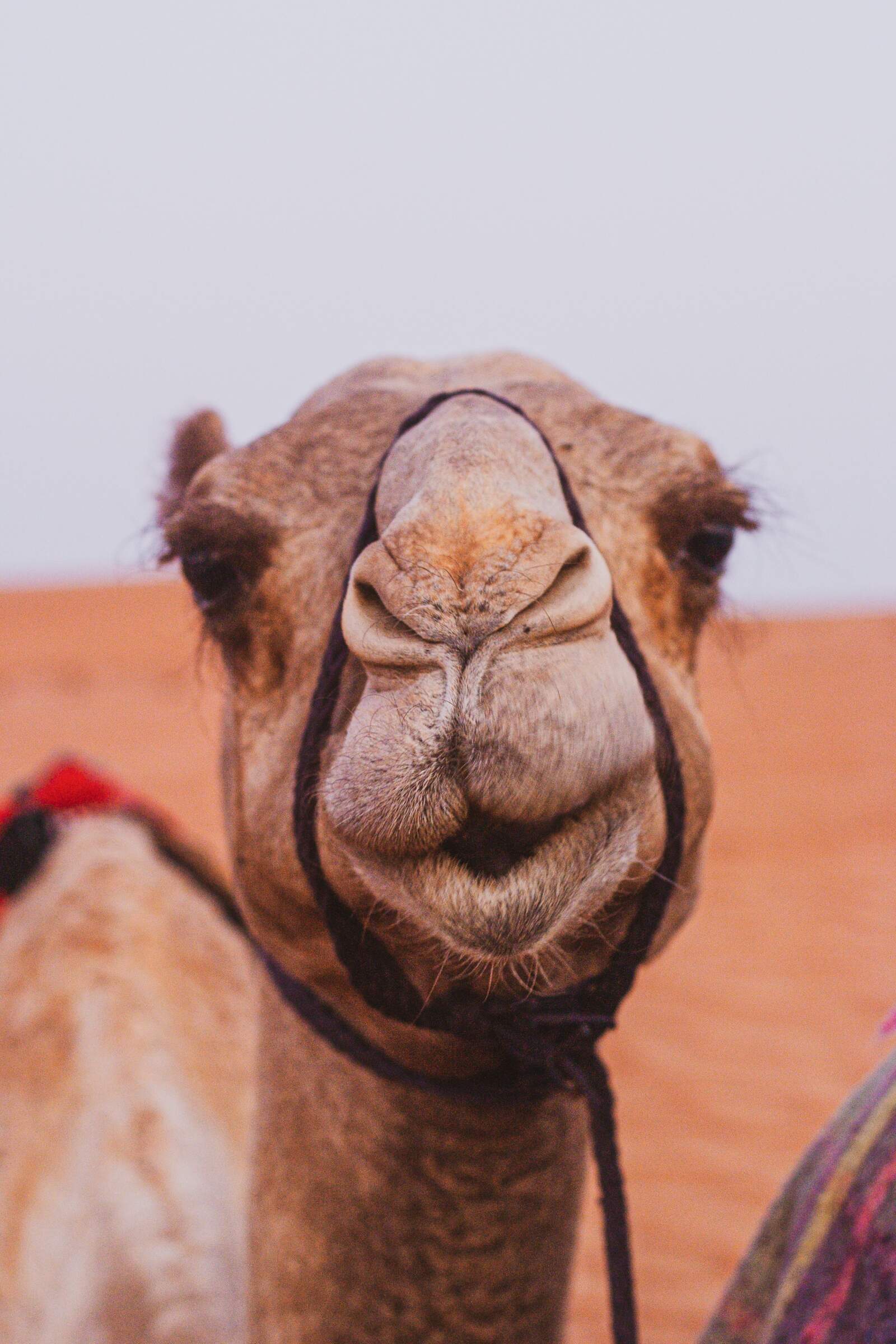
Wild Frontiers
Wild Frontiers Camel treks are based in the Milgis River area and run in various parts of northern Kenya between Lake Turkana and Laikipia.
When to go to Northern Kenya
Our month by month guide: What it's like to visit Sarara in Northern Kenya
Jan
Feb
Mar
Apr
May
Jun
Jul
Aug
Sep
Oct
Nov
Dec
Kenya in January
Clear, hot days and warm nights make this high season a popular time for safaris and it’s also good for diving and snorkelling as water clarity is excellent and gets better as the dry season progresses. Most lodges and tented camps treat January after the New Year week is over, as mid-season, making it a good compromise in terms of value for money with reasonably reliable, dry weather and some greenery left in the landscape.
Expert Africa bases its description of climate and weather in January, like the other months of the year, on the climate records of roughly the last 100 years, and it's fair to say that the weather and seasons since the beginning of this century have been highly irregular and unpredictable.
- On average, January is the second driest month of the year
- Elephants dig waterholes in the dry riverbed in the Samburu reserve.
- Wildebeest and many antelope have their calving season, to February.
- Migrant birds are seen in huge numbers, especially in the Rift Valley.
- Sea water clarity around the coral reefs generally good.
Our view
Fantastic: the very best time to visit
Weather in January
Kenya in February
With the short dry season well established, the grass grazed down and wildlife gathering close to water points, this is still a good time for a safari. Good water clarity in the Indian Ocean's coastal waters makes for excellent diving and snorkelling conditions.
Expert Africa bases its description of climate and weather in February, like the other months of the year, on the climate records of roughly the last 100 years, and it's fair to say that the weather and seasons since the beginning of this century have been highly irregular and unpredictable.
- On average, February is the driest month of the year.
- It’s sometimes possible to swim with whale sharks at Diani Beach.
- Migrant birds are still seen everywhere, especially near water.
- This is usually peak calving season for wildebeest and many antelopes.
- This month is often the hottest of the year, especially on the coast.
Our view
A very good time to visit
Weather in February
Kenya in March
Hot, increasingly humid weather – with good diving and snorkelling conditions at the start of the month – gives way to rains and lower accommodation costs. Expert Africa bases its description of climate and weather in March, like the other months of the year, on the climate records of roughly the last 100 years, and predicting the seasons since the beginning of this century has been difficult.
March is the month when – traditionally – intensely hot conditions build up until a cloudburst finally happens at the end of the month or in early April, to relieve the humidity. As ever, regional variations across the country can greatly impact on visitors' experiences.
- Sea-water clarity is best for diving before the long rains start.
- Visitor numbers are low, though the Easter holidays can be busier.
- Night skies can be scintillatingly clear in early March.
- Cropped down savannah grasses can make it easier to see the wildlife.
- Temperartures climb high, especially at lower elevations.
Our view
A good time to visit, with pros & cons
Weather in March
Kenya in April
April sees the full onset of the southeast monsoon wind or kusi, which heralds the long rains. Temperatures drop soon after the rains are established and you’ll often have facilities largely to yourself in this more affordable low season, sometimes known as the "green season". The bush quickly springs to life, with greenery sprouting almost before your eyes. While you're likely to get a fair number of heavy showers, the breaks in the rain can yield sparklingly clear conditions.
With the dust settled and bright sun piercing the clouds, conditions can be sublime for photography, especially first thing in the morning or in the late afternoon with another storm brewing. You may be lucky, or you may find conditions very wet and muddy.
- A wet month, the coast often gets more than 300mm (12in) of rain.
- Sunny spells can provide great light for photography.
- Buffalo and zebra calving season often happens in this month.
- Baby crocodiles hatch, for example on Central Island in Lake Turkana.
- Palearctic migrant birds gather to fly north to breeding grounds.
Our view
A time to avoid if possible
Weather in April
Kenya in May
While game viewing can be trickier as vegetation runs riot, between the cloudbursts the colours and light are great for photography at this time of year. Expert Africa bases its description of climate and weather in May, like the other months of the year, on the climate records of roughly the last 100 years, and while it's reasonable to expect heavy rains in many parts during this month, especially on the coast, the rains don't always come evenly or in some areas come at all.
In an El Niño year, the so-called long rains that normally are established across much of the country by May can be meagre, to the despair of farmers. On the other hand in a La Niña year, the long rains can bring floods. On the coast, the monsoon winds make the climate much more predictable, with heavy rains common throughout this month.
- Frogs breed in the ponds in the Arabuko Sokoke Forest near Watamu.
- Wildebeest, impala and other grazers are in rut (the breeding season).
- Kilimanjaro looks its best as heavy rain falls as snow on the summit.
- There's a sharp peek of rainfall on the coast with many rainy days.
- Accommodation prices are uniformly low, while some camps close.
Our view
A time to avoid if possible
Weather in May
Kenya in June
The rains give way to cloudy, cooler weather, often making for comfortable conditions by the end of the month, especially in the highlands. Starting from mid-June or the beginning of July and running until the end of October, this is the high season, and accordingly has higher accommodation rates and – at least until early September – higher numbers of visitors.
While the early part of June can often be rainy on the coast, it can be a great time to go on safari, with fresh greenery, many young animals and good photographic conditions with clear air.
- The Taru Desert, inland from the coast, is carpeted with flowers.
- The Lake Turkana Cultural Festival is held in Loiyangalani.
- Madaraka Day (commemorating self rule) is 1 June.
- The annual Lewa marathon runs a course through the wildlife.
- The Diani Rules "sports" event rips up the rulebook at Diani Beach.
Our view
A good time to visit, with pros & cons
Weather in June
Kenya in July
Kenya’s “winter" season sets in (winter is a misnomer but locals feel the change), and the highlands can be rather grey. Skies are often cloudy and the days can be surprisingly cool, with an average daytime high in many highland safari areas of 15-20°C and night-time temperatures dropping below 10°C in Nairobi and the highlands. Lower parts of the country and the coast are usually warm and dry, typically reaching highs of around 25°C with lows in the high teens.
As this is the start of the high season, coinciding with the usual arrival of the wildebeest migration in the Maasai Mara, July is a busy month. Ask your Expert Africa specialist to advise on how to avoid the crowds, which is not that difficult to do.
- The wildebeest migration usually reaches the Maasai Mara in July.
- Simbi Lake (Kisumu) and Crater Lake (Naivasha) can attract flamingoes.
- Watersports start to pick up and some surfing is possible at Malindi.
- Afternoon thunderstorms are a common feature in the Maasai Mara.
- The sea can be choppy along the coast, making diving difficult.
Our view
A good time to visit, with pros & cons
Weather in July
Kenya in August
The Great Migration fills the plains of the Maasai Mara, and school’s out, so the park roads are full of tourists – ask your Expert Africa specialist for advice on crowd avoidance tactics. Choose a private conservancy rather than a public national park or national reserve for quieter conditions.
Like July, August is generally mild and relatively dry in the safari areas, but it can be very chilly in the highlands, even in the middle of the day, and hail occasionally falls above altitudes of around 2,400m (8,000ft). Nairobi can be disappointingly overcast, with low cloud.
- Apart from Christmas holidays, this is the busiest month of the year.
- Late August sees peak wildebeest drama at the Mara River crossings.
- Coastal winds are good for kite- and wind-surfing.
- Few mosquitoes are around at this generally dry time of year.
- The annual Camel Derby takes place in the Samburu capital, Maralal.
Our view
A good time to visit, with pros & cons
Weather in August
Kenya in September
The skies clearing of cloud signals the start of hot, dry weather with little chance of rain – and, after the first few days of the month, far fewer visitors – making the latter part of September a good time for a quieter safari. While early September is often good for dramatic migration crossings along the Mara River, you might consider deliberately postponing your trip until later in the month, when the migration can still be very impressive and visitor numbers fewer.
If tourist surges are somewhat predictable, however, the patterns of the wildebeest migration are more volatile, and like all of Expert Africa's climate and weather assessments, they are based on accumulated years of experience rather than guaranteed certainty.
- This is still high season, with prices to match.
- Many river crossings take place on the Mara river in both directions.
- Natural bush fires flush out insects and small animals for predators.
- The Rift Valley Music Festival takes place by Lake Naivasha.
- With school holidays over by early September, late-month is quieter.
Our view
Fantastic: the very best time to visit
Weather in September
Kenya in October
Still hot, mostly dry and not too busy, this is many people’s preferred month for a safari, and it’s also good for diving and snorkelling. The wildebeest and zebra herds of the great migration are often still to be seen, though in dwindling numbers. The swamps of Amboseli attract thirsty wildlife including large herds of elephants.
While we wouldn't expect much rain across most of the country this month, the climate has become so unpredictable that you can never say never, and the possibiity of the short rains – usually associated with November to mid-December, starting early, can't be discounted.
- This month sees the tail end of the great migration in the Mara.
- Palearctic migrant birds start to arrive, staying until March.
- Turtle nests hatch at Watamu, until November.
- Amboseli elephants focus on the swamps for their daily water.
- The Indian Ocean monsoon winds turn from southeast to northeast.
Our view
A very good time to visit
Weather in October
Kenya in November
The northeast monsoon wind or kaskazi heralds the start of the “short rains", usually some time in the second half of the month. From November to mid-December, this is the low season, and accordingly has lower accommodation rates and lower visitor numbers. Across most of the country you can expect warm, somewhat cloudy weather, with occasional heavy showers and localised flooding.
Expert Africa bases its description of the climate in November, like the other months of the year, on the records of roughly the last 100 years, and it's fair to say that the seasons since the beginning of this century have been highly irregular and unpredictable: some years the short rains don't come at all, or don't reach every part of the country. In an El Niño year, the November short rains can be very heavy, but in a La Niña year, they can fail completely.
- Swimming with dolphins in Lamu can be done from now until April.
- Birders gather at Ngulia in Tsavo West to ring Palearctic migrants.
- The Lamu Cultural Festival takes over the town and Lamu Creek.
- Agricultural shows often take place regional market towns.
- This is low season, so camps can be great value, with special offers.
Our view
A good time to visit, with pros & cons
Weather in November
Kenya in December
In a typical December, the rains usually finish by middle of the month, leaving the landscape looking its best, under clear blue skies, and heralding the start of the second peak tourist season from around 20 December to the first week of January. Our assessment of the likely weather in December, like the other months of the year, is based on climate records, and it's fair to say that the seasons since the beginning of this century have been highly irregular and unpredictable.
Christmas can sometimes be wet, but most years the rains have finished a week or two earlier, with the festive season ushering in the perfect combination of clear skies and sunshine by day and starry nights.
- Christmas and New Year are busy, with the lodges and camps full.
- Rates are highest after 24 Dec, with supplements on public holidays.
- Republic Day and Independence day are celebrated on 12 December.
- Good kite- and wind-surfing restarts, with strong northeasterly winds.
- Mango season begins, providing excitement for primates and elephants.
Our view
A good time to visit, with pros & cons
Weather in December

Looking for inspiration on where to travel next?
Visit our trip chooser to explore your options and find inspiration for your perfect African adventure
Inspire me